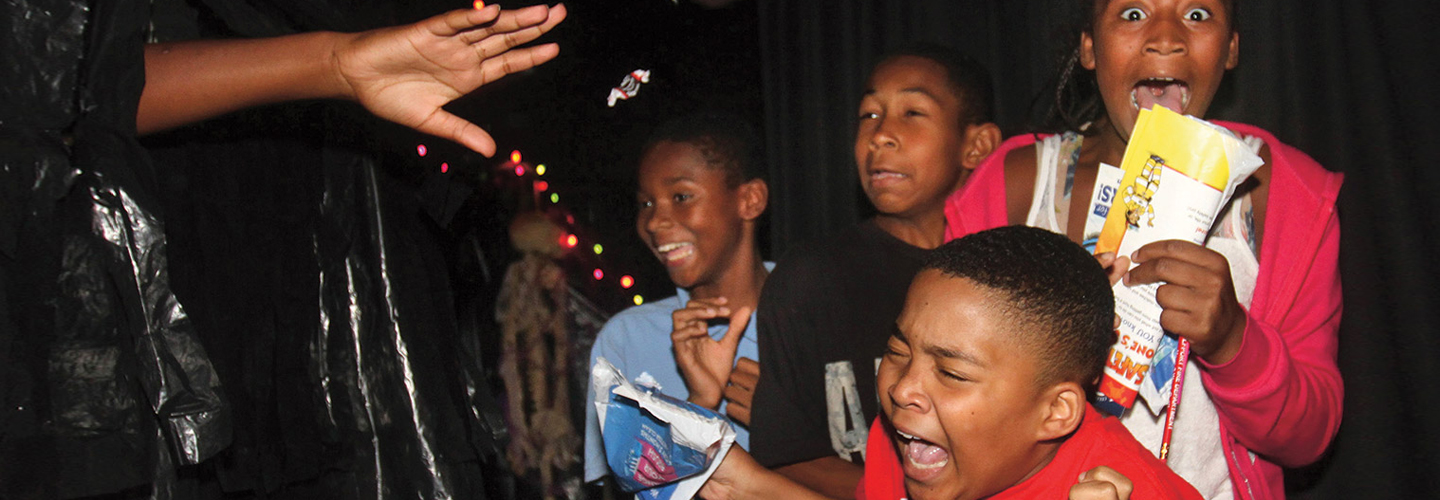Halloween is the time of year when many people actually like being scared. They watch suspenseful movies, dress up in creepy costumes, and visit “haunted” houses. In fact, every year roughly 10 million people across the U.S. visit these spooky attractions. One of the most popular is ScareHouse in Pittsburgh, Pennsylvania. Part of Margee Kerr’s job is to make this horrifying haunt as chilling as possible.
Kerr is a sociologist who teaches at the University of Pittsburgh. She studies human behavior, especially how people respond to fear. One way she does that is by designing truly terrifying scares—from hideous zombies to ghastly ghouls—for an area of ScareHouse known as “The Basement.” Then she observes the reactions of volunteers who enter her chamber of horrors. Kerr hopes the information she gathers will help her better understand what scares people and why some of us seek out scary situations like haunted houses.

